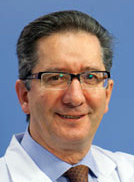Addition of daratumumab to Rd or Vd improves treatment outcomes for both the standard-risk and high-risk patients with relapsed or refractory multiple myeloma
Previously, the results of 2 randomized phase III trials in patients with relapsed or refractory multiple myeloma (RRMM) demonstrated that combining daratumumab with lenalidomide + dexamethasone (Rd, POLLUX study) or bortezomib + dexamethasone (Vd, CASTOR study) significantly improved progression-free survival (PFS) and achieved higher overall response rates (ORR) compared with the respective standard-of-care regimen alone.1,2 San Miguel and colleagues assessed the efficacy of the triplet regimes (DRd and DVd) in RRMM patients with a standard or high cytogenic risk status and concluded that adding daratumumab to Rd or Vd improved treatment outcomes in both patient cohorts.
Daratumumab is a human CD38-targeting monoclonal antibody that exerts its antimyeloma activity through both direct (on-tumor) and indirect (immunomodulatory) mechanisms of action. Due to these novel mechanisms of action, addition of daratumumab to standard-of-care regimens may be beneficial to RRMM patients who have a poor prognosis due to high-risk cytogenetic abnormalities.
To detect cytogenetic abnormalities, bone marrow aspirates were collected at screening visits from 311/569 patients from the POLLUX study and from 353/498 patients from the CASTOR study and these were analyzed by next-generation sequencing (NGS).3 Patients were considered to have a high cytogenetic risk status if they had ≥1 of the following abnormalities: t(4;14), t(14;16), or del17p; patients were considered to have a standard cytogenetic risk if they lacked these abnormalities. Efficacy analyses included progression-free survival (PFS), objective response rate (ORR) and MRD-negative rates.
Patients included in the POLLUX study had a median follow-up of 17.3 months. High-risk patients treated with DRd (n=17) had a significantly prolonged median PFS compared to treatment with Rd (n=25). In addition, the ORR was increased in the high-risk patients treated with DRd compared to Rd (85% versus 67%, respectively, p=0.14). Responses to DRd versus Rd included CR or better in 33% versus 6% of these high-risk patients, respectively. In standard-risk patients, DRd versus Rd also resulted in significant improvements in median PFS as well as ORR. Responses to DRd versus Rd included CR or better in 52% versus 24% of these standard-risk patients.
The median follow-up of patients included in the CASTOR study was 13.0 months. Treating both high- and standard-risk patients with DVd versus Vd significantly prolonged median PFS and increased ORR (high risk: 82% versus 62%; p=0.039; standard risk: 85% versus 64%; p=0.0003). Responses to DVd versus Vd among high-risk patients included CR or better in 30% versus 9% of patients, respectively, for standard risk patients these percentages were 25% and 8%, respectively.
Apart from PFS and ORR, minimal residual disease (MRD) was also assessed. In the POLLUX study 21 high-risk patients treated with DRd achieved MRD-negative status versus none of the patients treated with Rd. These patients achieving a MRD-negative status remained progression-free. The same findings were reported for the high-risk patients treated with DVd in the CASTOR study: 44 patients achieved MRD negativity and also these patients remained progression-free.
In conclusion, adding daratumumab to Rd or Vd improved treatment outcomes irrespective of cytogenetic risk status in patients with RRMM. Both DRd and DVd appear to benefit RRMM patients who have poor prognoses due to high-risk cytogenetic abnormalities.
References
1 Dimopoulos MA et al, N Engl J Med 2016;375(14):1319-1331
2 Palumbo A et al, N Engl J Med 2016;375(8):754-766
3 San-Miguel J, Weisel K, Cook G. Efficacy by cytogenetic risk status for daratumumab in combination with lenalidomide and dexamethasone or bortezomib and dexamethasone in relapsed or refractory multiple myeloma. EHA 2017, oral presentation, abstract S101


